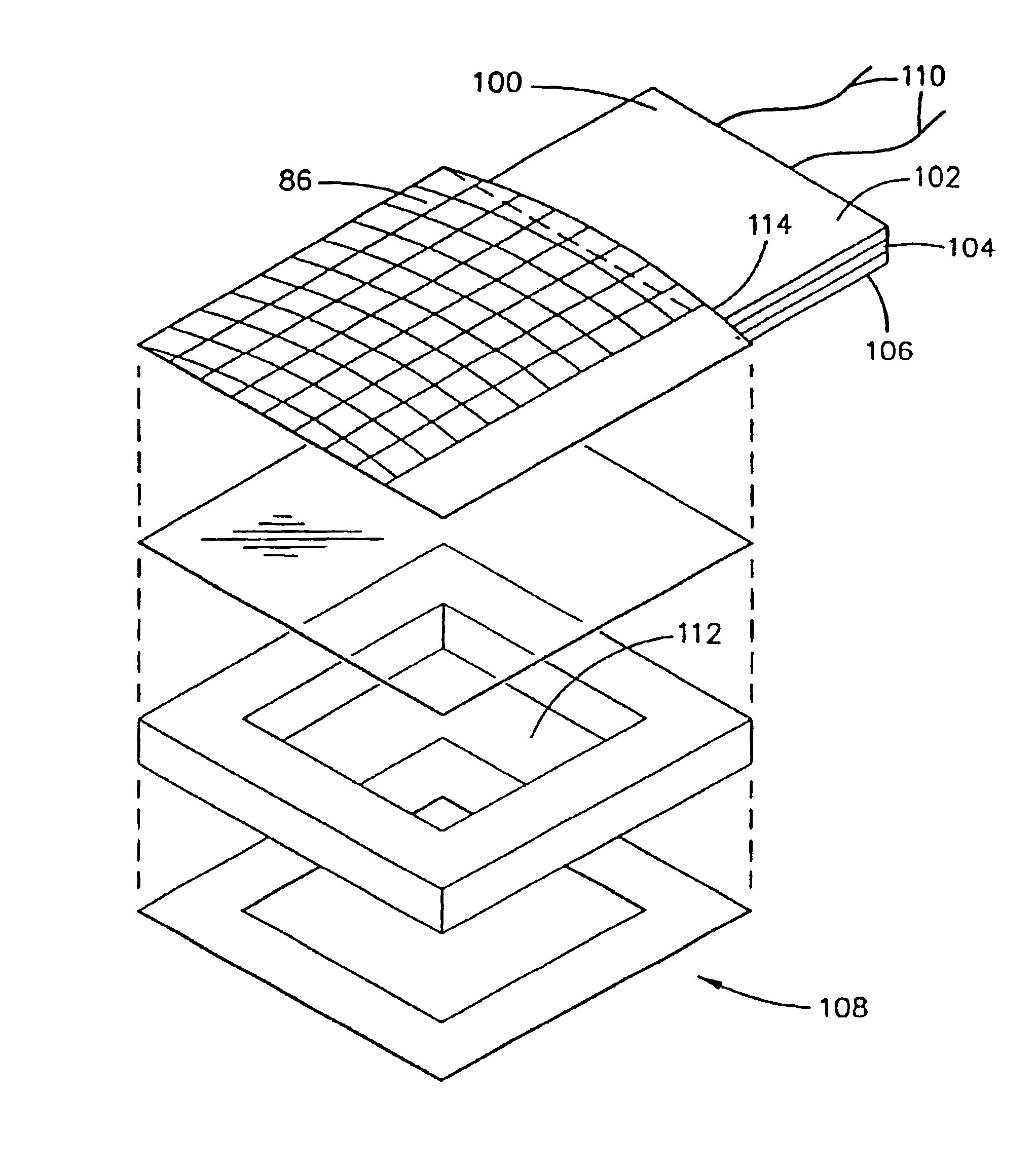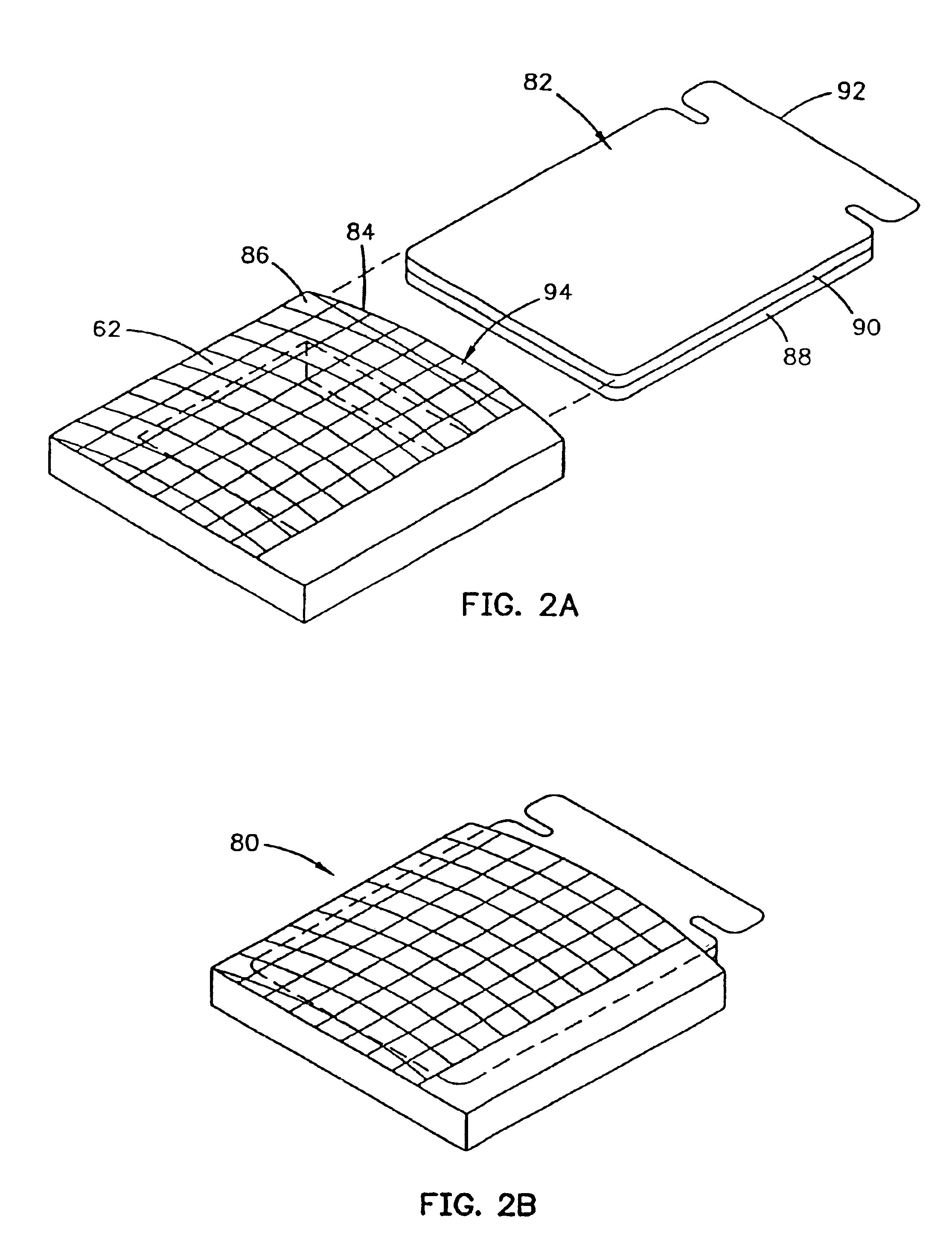Tissue treatment by normothermic heating
a tissue treatment and normothermic heating technology, applied in the direction of contraceptive devices, bandages, infusion syringes, etc., can solve the problems of increasing morbidity, inhibiting wound healing, and slowing cellular functions and biochemical reactions, so as to prevent wound death, increase the capacity of holding moisture, and reduce the effect of aging
- Summary
- Abstract
- Description
- Claims
- Application Information
AI Technical Summary
Benefits of technology
Problems solved by technology
Method used
Image
Examples
Embodiment Construction
[0088]The present invention is directed to a non-contact wound covering for controlling the local environment at a wound site on a patient. A wound site includes those portions of the patient's skin obviously definable as the wound area and the immediately adjacent periwound area as the selected treatment area of the wound site. The wound covering protects the wound from contamination by materials from the outside environment and also prevents the wound site from shedding contaminants into the local environment of the patient, i.e. the hospital room. The treatment volume formed proximate the wound site can be controlled to create an optimal healing environment. The word “wound” as used herein refers generically to surgical incisions, ulcers, or other lesions or breaks in the skin.
[0089]First, a substantially vertical wall is provided to encircle the selected treatment area on the surface of the patient's skin. This vertical wall provides an upper surface to support a layer spanning ...
PUM
 Login to View More
Login to View More Abstract
Description
Claims
Application Information
 Login to View More
Login to View More - R&D
- Intellectual Property
- Life Sciences
- Materials
- Tech Scout
- Unparalleled Data Quality
- Higher Quality Content
- 60% Fewer Hallucinations
Browse by: Latest US Patents, China's latest patents, Technical Efficacy Thesaurus, Application Domain, Technology Topic, Popular Technical Reports.
© 2025 PatSnap. All rights reserved.Legal|Privacy policy|Modern Slavery Act Transparency Statement|Sitemap|About US| Contact US: help@patsnap.com



